We left our little piece of sunshine by the Mediterranean Sea in Torremolinos and headed to Cordoba. Córdoba is a city in the southern Spanish region of Andalusia, and the capital of the province of Córdoba. It was an important Roman city and a major Islamic center in the Middle Ages. It’s best known for La Mezquita, an immense mosque dating from 784 A.D., featuring a columned prayer hall and older Byzantine mosaics. After it became a Catholic church in 1236, a Renaissance-style nave was added in the 17th century.
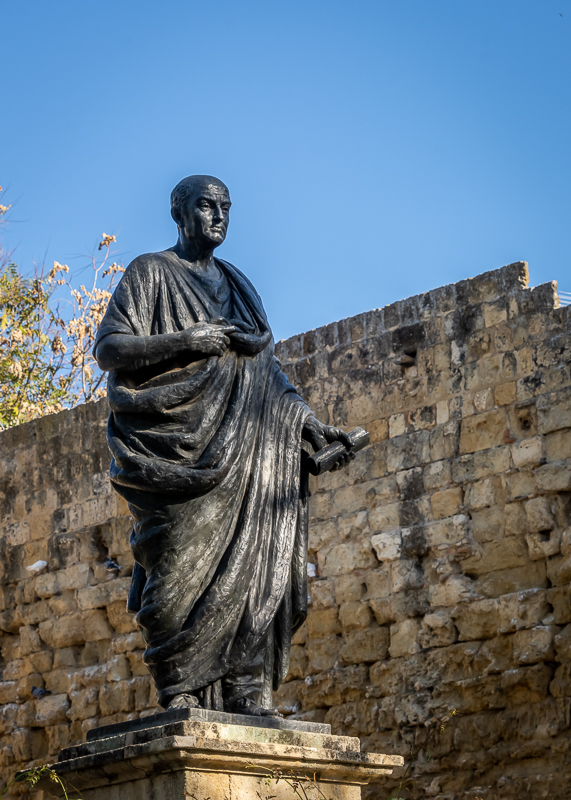
This monument to the Cordoban philosopher stands next to Puerta de Almodovar. Seneca was born in Cordoba in the 4th year B.C. and then went to Rome to complete his studies. During the reign of Claudius, he was a member of the senate, and around 50 A.D. was named a praetor by Nero, and in 56, a consul. Several years later, he retired and dedicated his time to reading, meditation and writing some of his best philosophical works. He had studied alongside grammarians, philosophers and rectors, and all his work was imbued with the Stoic doctrine. Seneca tried his hand at a range of literary styles, of which only some of his tragedies but most of his philosophical works have survived to this day, and the topics he mainly dealt with were ethical issues, theological problems and political theory. One of his most important works in the treatise On the Tranquility of the Soul, written during his decline. However, the end of his life was far from tranquil, and he was accused of conspiracy and sentenced to death by Nero, although Seneca preferred to take his own life instead.

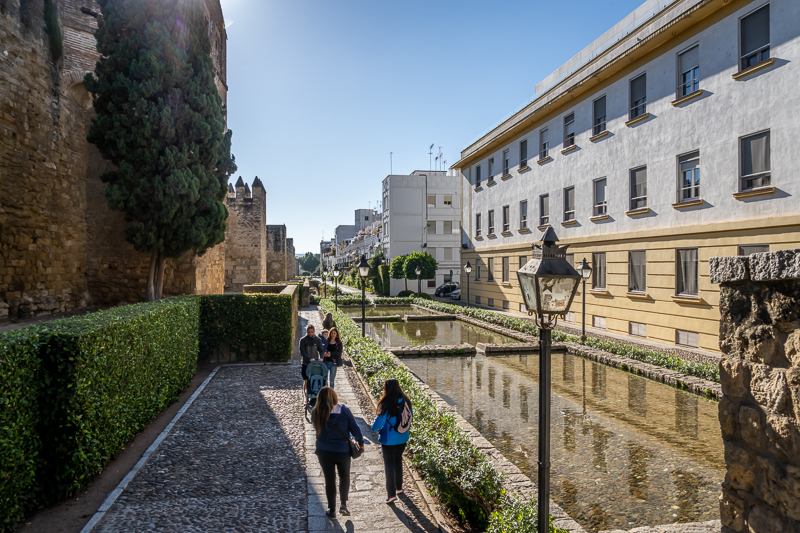

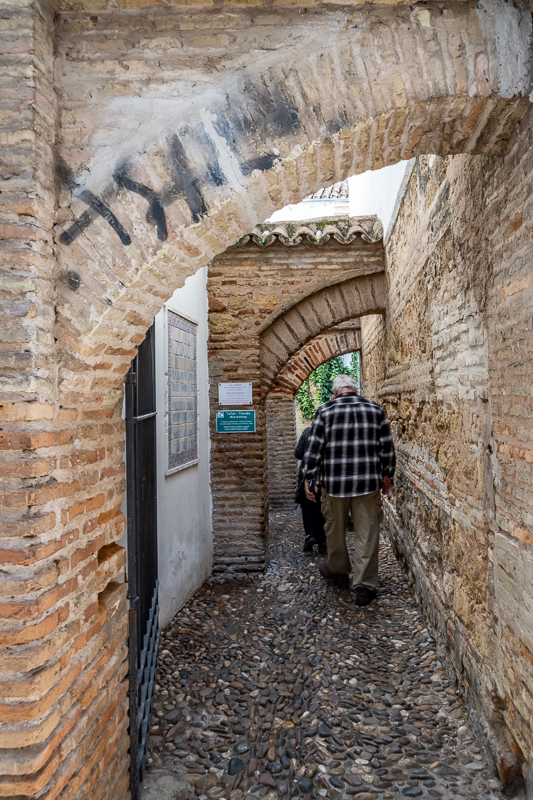


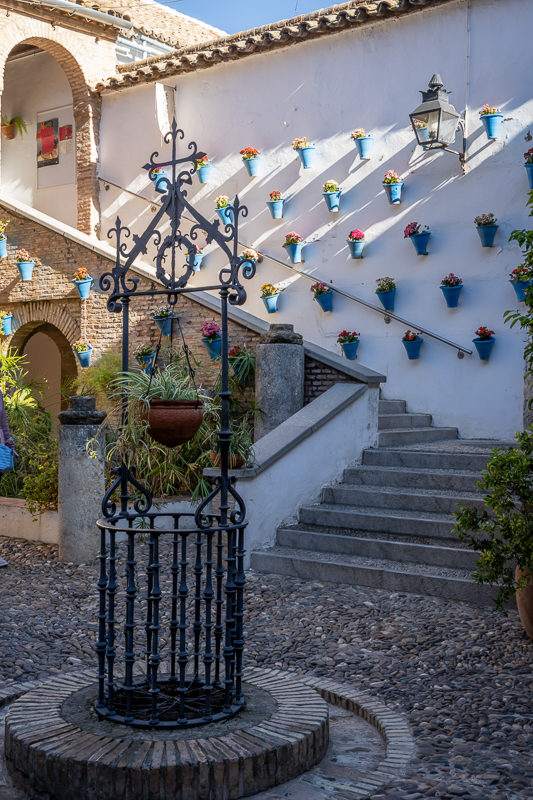
Typically the animals were kept inside the patio. Houses didn’t have windows facing out but instead they faced into the patio.

Mosén Ben Maimón, Maimónides, one of the great Jewish thinkers of Cordova and who, as Averroes, tried to reconcile philosophy and religion, has a monument in the Plaza de Tiberiades.

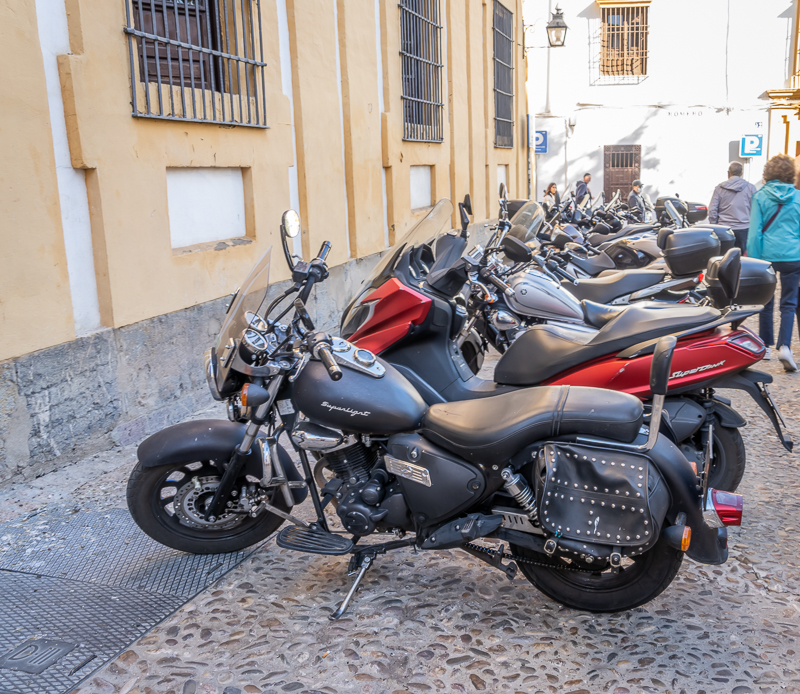

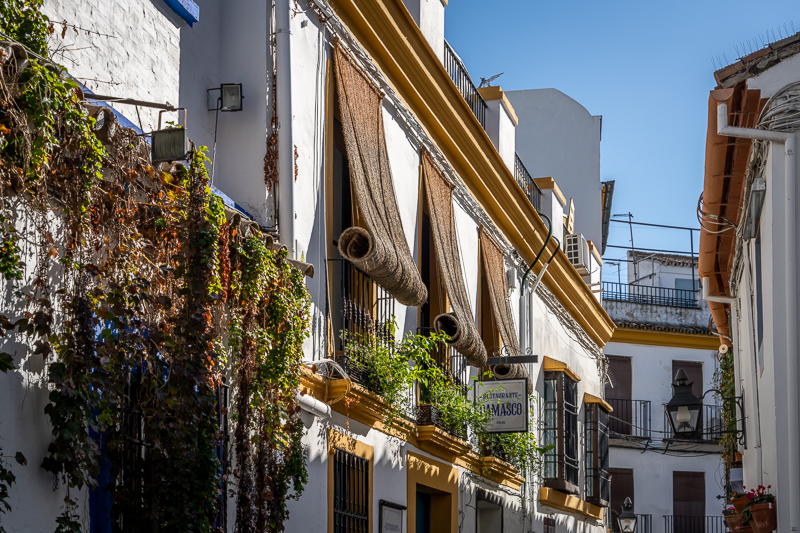










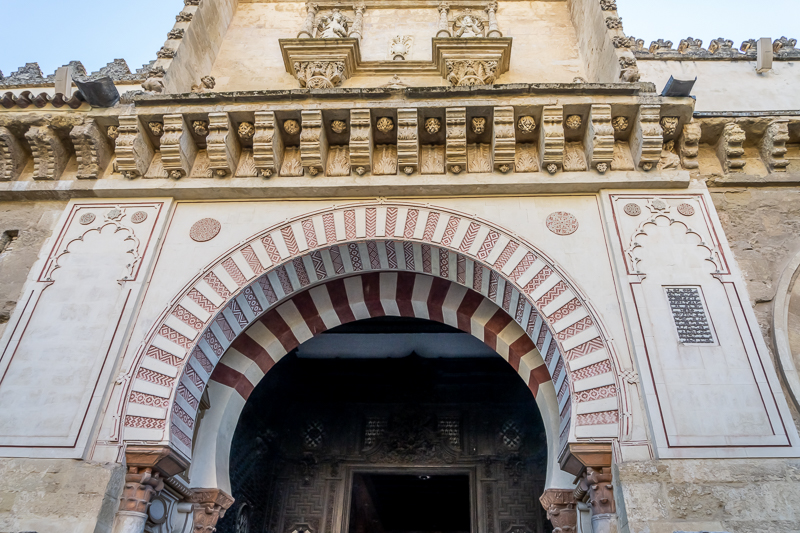
The Mosque–Cathedral of Córdoba, officially known by its ecclesiastical name, the Cathedral of Our Lady of the Assumption, is the cathedral of the Roman Catholic Diocese of Cordoba dedicated to the Assumption of Mary. Due to its status as a former Islamic mosque, it is also known as the Mezquita and as the Great Mosque of Córdoba.
According to traditional accounts a Visigothic church, the Catholic Christian Basilica of Saint Vincent of Saragossa, originally stood on the site of the current Mosque-Cathedral, although the historicity of this narrative has been questioned by scholars. The Great Mosque was constructed on the orders of Abd ar-Rahman I in 785 CE, when Córdoba was the capital of the Muslim-controlled region of Al-Andalus. It was expanded multiple times afterwards under Abd ar-Rahman’s successors up to the late 10th century. Among the most notable additions, Abd ar-Rahman III added a minaret (finished in 958) and his son Al-Hakam II added a richly-decorated new mihrab and maqsura section (finished in 971). The mosque was converted to a cathedral in 1236 when Córdoba was captured by the Christian forces of Castile during the Reconquista. The structure itself underwent only minor modifications until a major building project in the 16th century inserted a new Renaissance cathedral nave and transept into the center of the building. The former minaret, which had been converted to a bell tower, was also significantly remodeled around this time. Starting in the 19th century, modern restorations have in turn led to the recovery and study of some of the building’s Islamic-era elements. Today, the building continues to serve as the city’s cathedral and Mass is celebrated there daily.
The mosque structure is regarded as an important monument in the history of Islamic architecture and is considered by many scholars to have been highly influential on the subsequent “Moorish” architecture of the western Mediterranean regions of the Muslim world. It is also one of Spain’s major historic monuments and tourist attractions, as well as a UNESCO World Heritage Site since 1984.
So to sum it up, it is a Roman Catholic Cathedral built inside of a mosque, that was built on roman ruins. So let’s go inside – it is amazing, huge, and overwhelming.

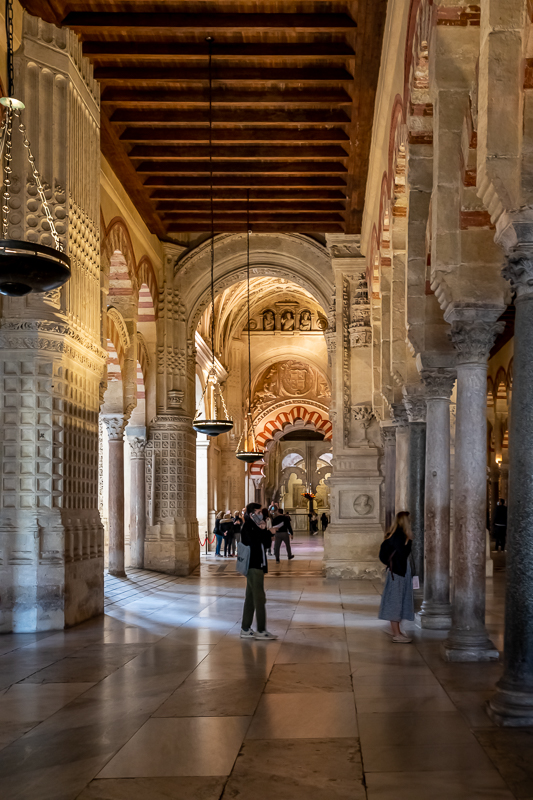




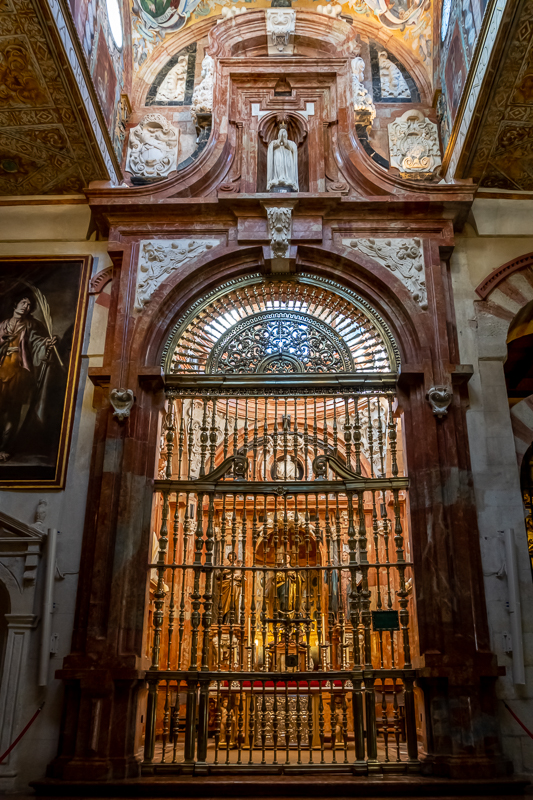



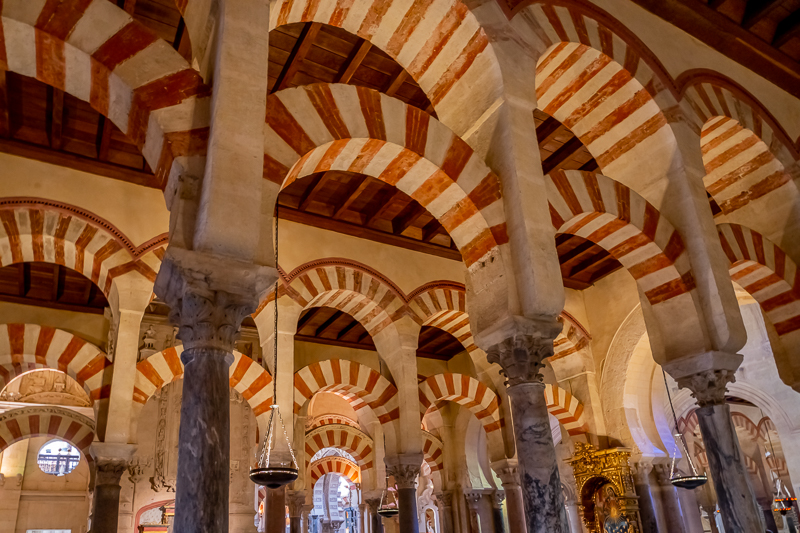

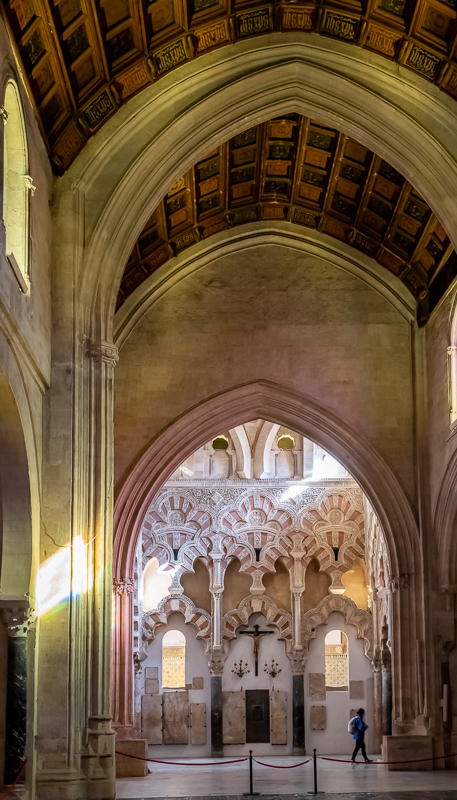
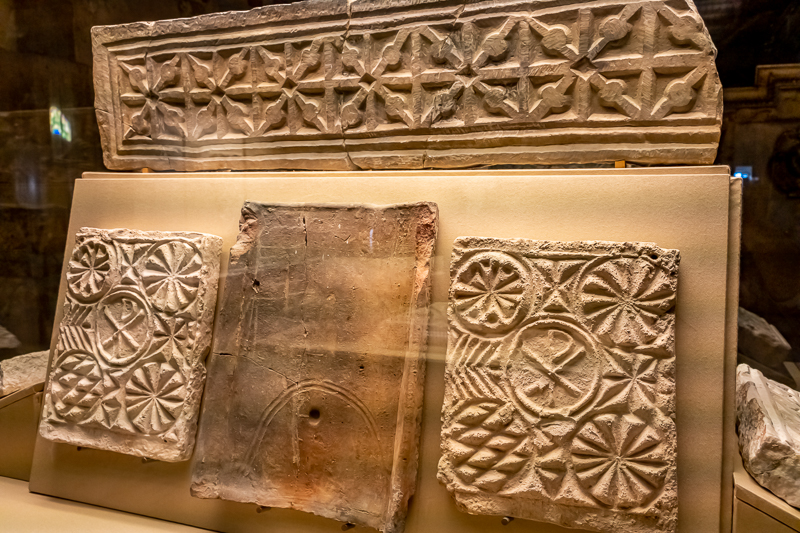

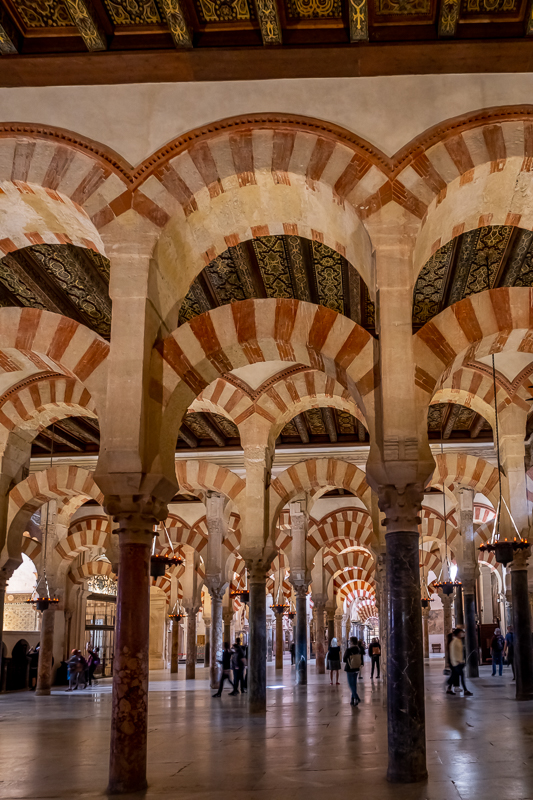


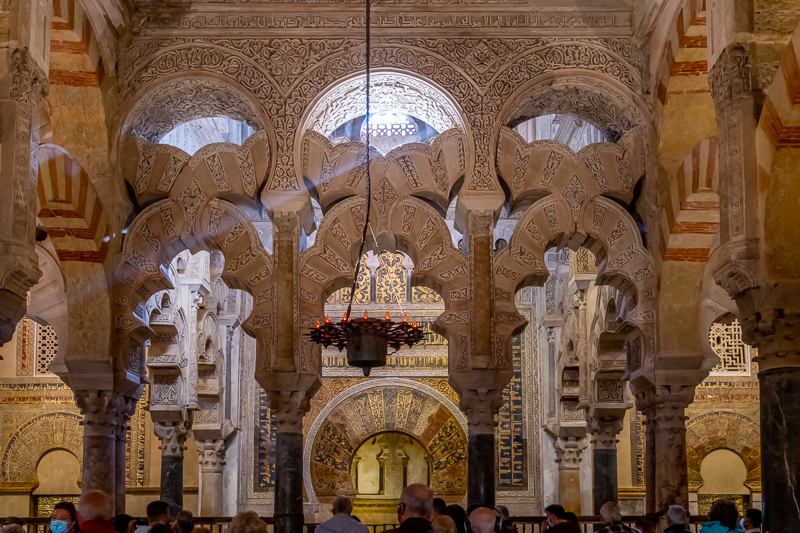




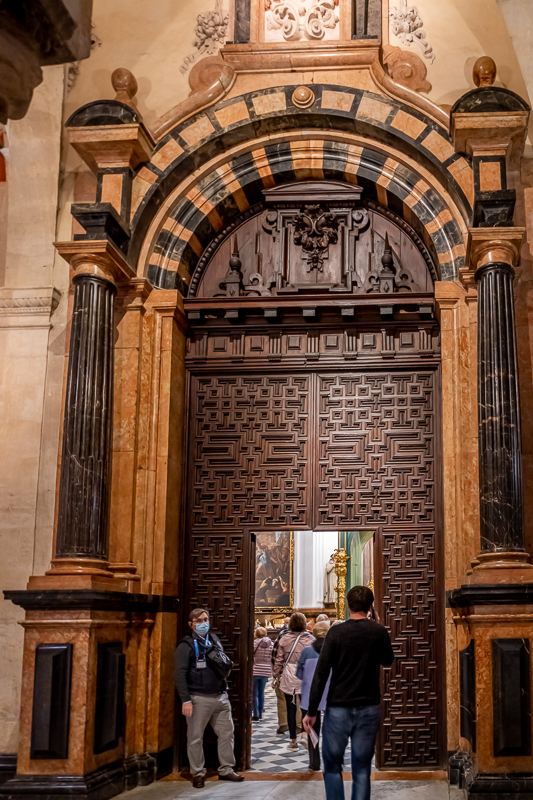

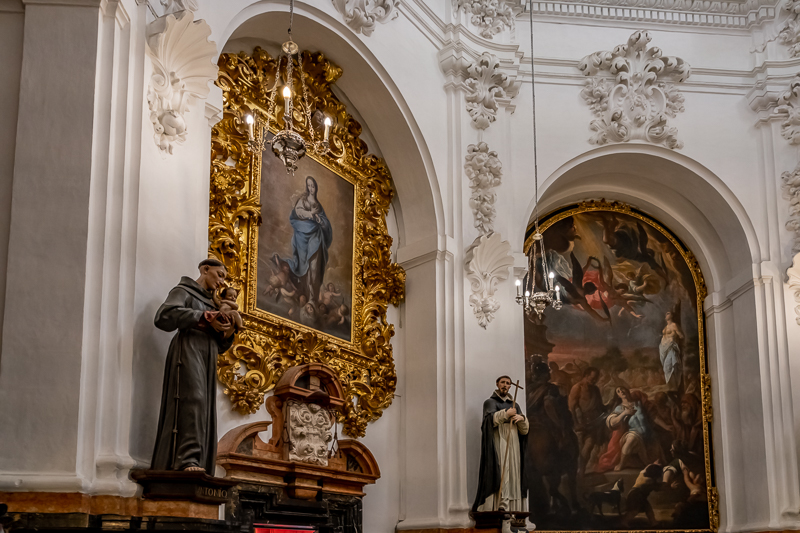


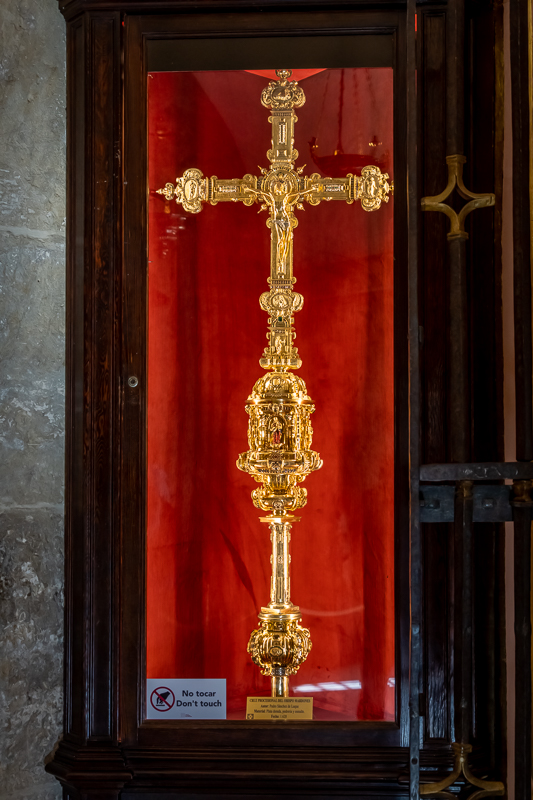
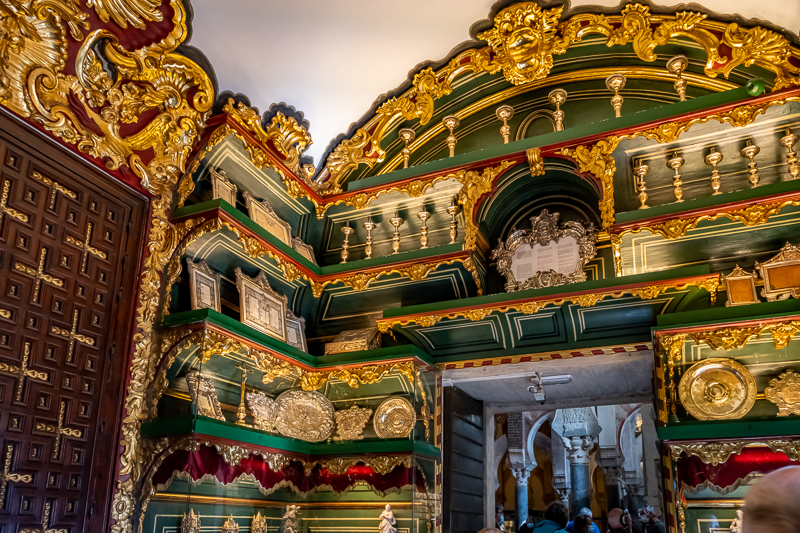

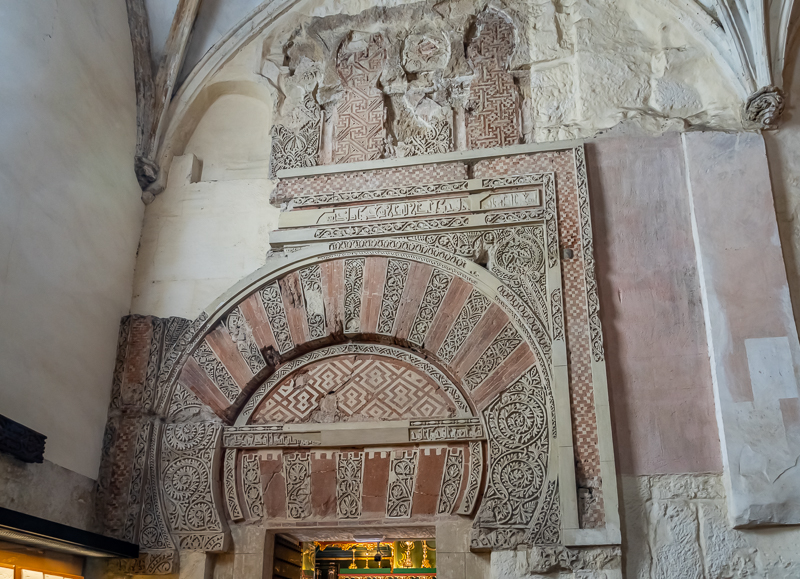
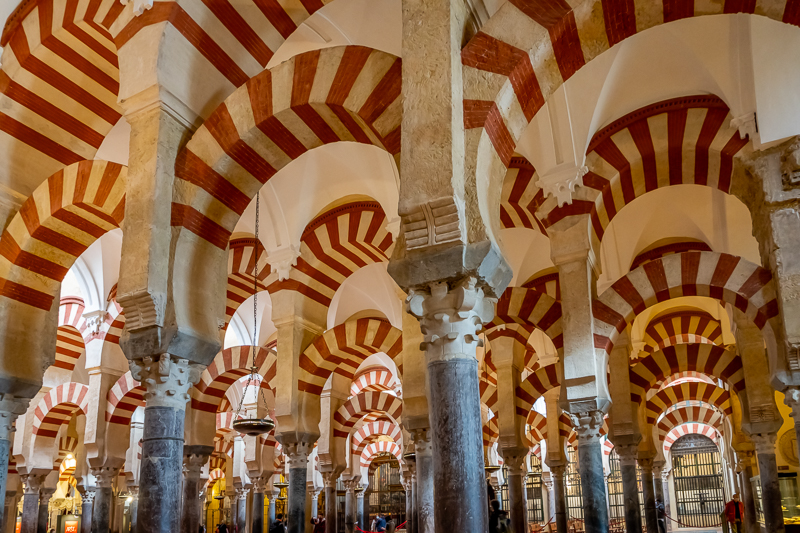
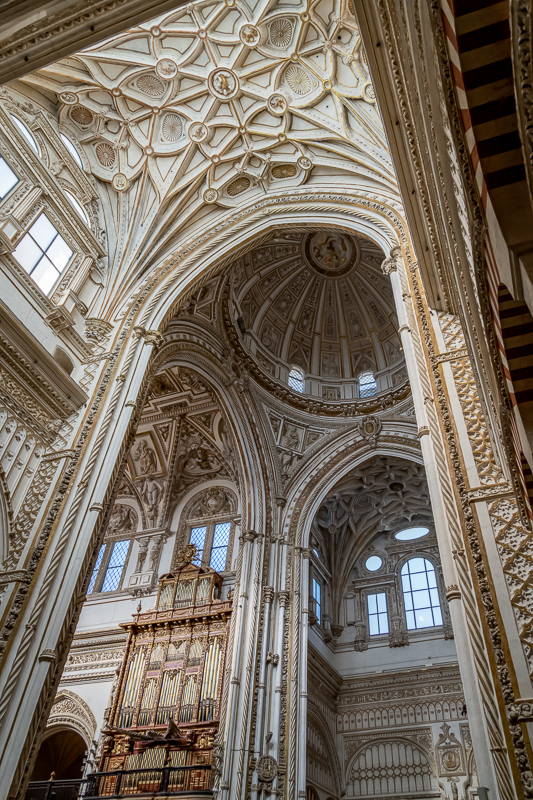
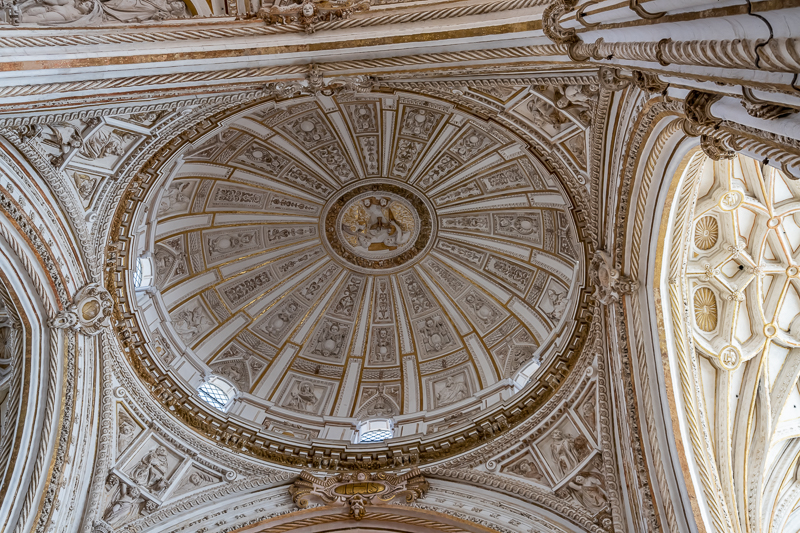



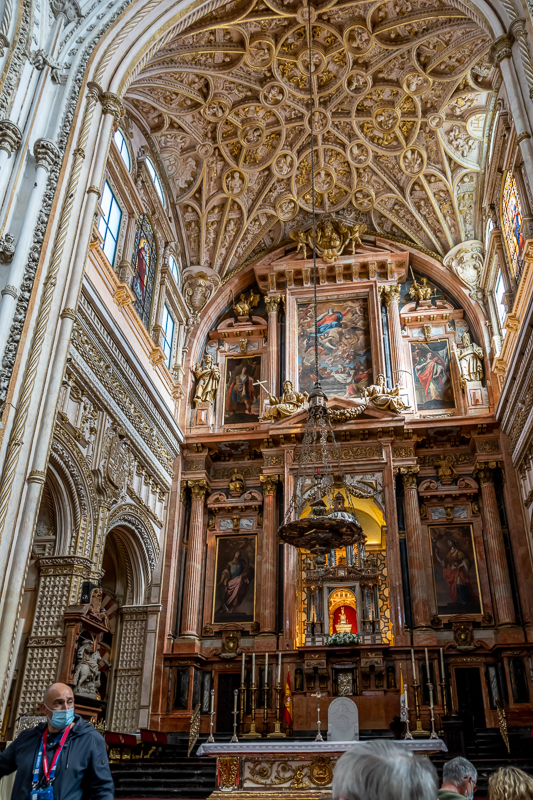


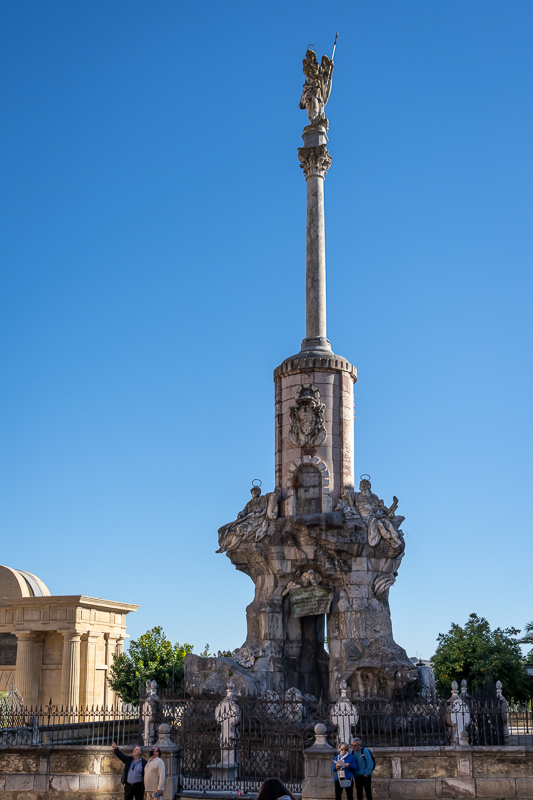
It was made by the sculptor Miguel Verdiguier, in thanks for saving the city from the plague. The statue stands on a cushioned pedestal surrounded by columns rising from a castle, which, in turn, stands on a mountain with images of saints. The whole monument is adorned with animal figures and representations of the bountifulness of Cordoba’s soil.




We now headed back to our bus for the ride to Seville.
Fantastic presentation of photos & commentary. Thank you for sharing.